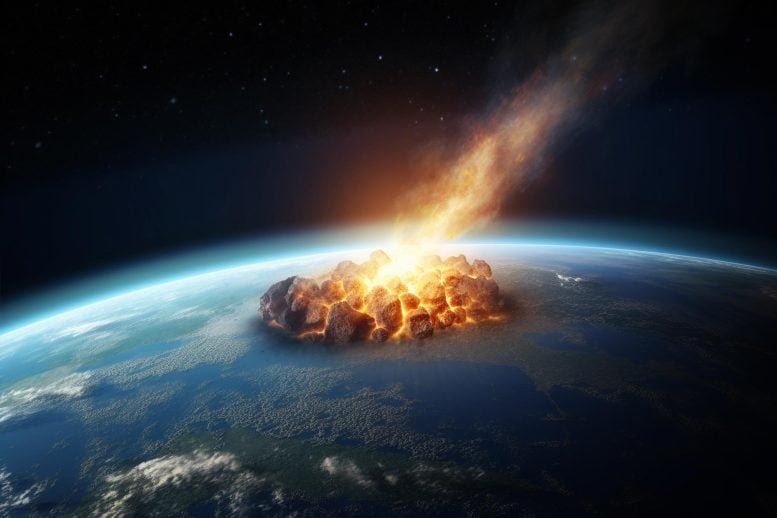Flaunt Weeekly
Scientists discovered that the asteroid causing the mass extinction 66 million years ago came from a rare C-type asteroid beyond Differentiating the Chicxulub Impact from Volcanic Activity While some propose large-scale volcanic activity from the Deccan Traps igneous province as an alternative source of PGEs, the specific PGE ratios at the K-Pg boundary align more with asteroid impacts than volcanic activity. However, much about the nature of the Chicxulub impactor – its composition and extraterrestrial origin – is poorly understood. To address these questions, Mario Fischer-Gödde and colleagues evaluated ruthenium (Ru) isotopes in samples taken from the K-Pg boundary. For comparison, they also analyzed samples from five other asteroid impacts from the last 541 million years, samples from ancient Archaean-age (3.5 – 3.2 billion-years-old) impact-related spherule layers, and samples from two carbonaceous meteorites. Ficher-Gödde et al. found that the Ru isotope signatures in samples from the K-Pg boundary were uniform and closely matched those of carbonaceous chondrites (CCs), not Earth or other meteorite types, suggesting that the Chicxulub impactor likely came from a C-type asteroid that formed in the outer Solar System. They also rule out a comet as the impactor. Ancient Archean samples also suggest impactors with a CC-like composition, indicating a similar outer Solar System origin and perhaps representing material that impacted during Earth’s final stages of accretion. In contrast, other impact sites from different periods showed Ru isotope compositions consistent with S-type (salicaceous) asteroids from the inner Solar System. Reference: “Ruthenium isotopes show the Chicxulub impactor was a carbonaceous-type asteroid” by Mario Fischer-Gödde, Jonas Tusch, Steven Goderis, Alessandro Bragagni, Tanja Mohr-Westheide, Nils Messling, Bo-Magnus Elfers, Birger Schmitz, Wolf U. Reimold, Wolfgang D. Maier, Philippe Claeys, Christian Koeberl, François LH Tissot, Martin Bizzarro and Carsten Münker, August 15, 2024, Science.
DOI: 10.1126/science.adk4868




